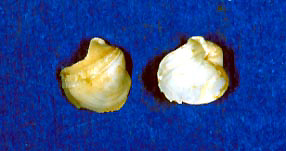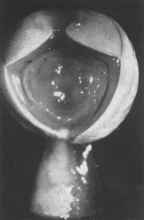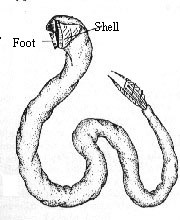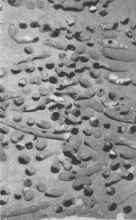(tereŽdo) or teredo , marine bivalve mollusk, specialized for boring in wood. A shipworm is not a worm, but a greatly elongated clam . Its two shells, enclosing only the front end of the body, function as a tool, rather than a protective covering; their ridged and roughened surfaces are used for boring. The burrow (lined with a calcareous coating produced by the clam's mantle) is begun when the animal is in its larval stage and is expanded as it grows. The common shipworm of the Atlantic Ocean, Teredo navalis, may grow up to 2 ft (60 cm) long, although its shells remain only 12 in. (12 mm) long. Shipworms feed on wood particles and minute organisms. They do enormous damage to piers and
ships and were death to the ships that cruised the oceans of the world.
They are particularly bad in the warm tropical waters of the Caribbean
Sea. It was not until the discovery that placing a skin of copper plate,
on the hull of ships, was the problem controlled. In the 15th
and 16th century, the only way to protect a ship was to cover the hull
with tar and pitch. This worked for a short time, and the ship had to be
beached, periodically so that infested timbers could be replaced and
re-pitched.
|




